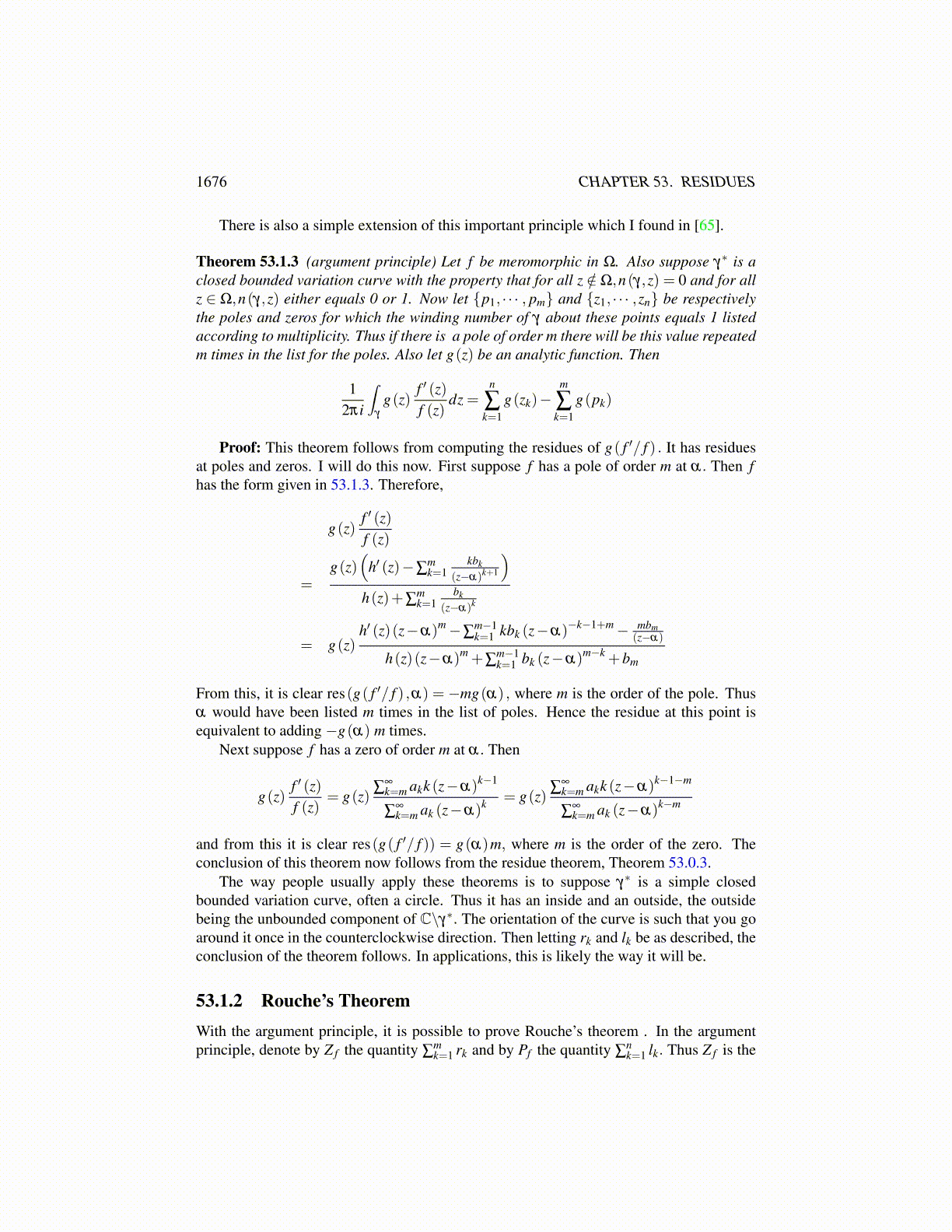
1676 CHAPTER 53. RESIDUES
This equals
limR→∞
∫ R
−R(cos(xt)+ isin(xt))
sin(x)x
dx
= limR→∞
∫ R
−Rcos(xt)
sin(x)x
dx
= limR→∞
∫ R
−Rcos(xt)
sin(x)x
dx
= limR→∞
12
∫ R
−R
sin(x(t +1))+ sin(x(1− t))x
dx
Let t ̸= 1,−1. Then changing variables yields
limR→∞
(12
∫ R(1+t)
−R(1+t)
sin(u)u
du+12
∫ R(1−t)
−R(1−t)
sin(u)u
du).
In case |t| < 1 Example 53.0.4 implies this limit is π. However, if t > 1 the limit equals 0and this is also the case if t <−1. Summarizing,
limR→∞
∫ R
−Reixt sinx
xdx =
{π if |t|< 10 if |t|> 1 .
53.1 Rouche’s Theorem And The Argument Principle53.1.1 Argument PrincipleA simple closed curve is just one which is homeomorphic to the unit circle. The JordanCurve theorem states that every simple closed curve in the plane divides the plane intoexactly two connected components, one bounded and the other unbounded. This is a veryhard theorem to prove. However, in most applications the conclusion is obvious. Nev-ertheless, to avoid using this big topological result and to attain some extra generality, Iwill state the following theorem in terms of the winding number to avoid using it. Thistheorem is called the argument principle. First recall that f has a zero of order m at α iff (z) = g(z)(z−α)m where g is an analytic function which is not equal to zero at α. Thisis equivalent to having f (z) = ∑
∞k=m ak (z−α)k for z near α where am ̸= 0. Also recall that
f has a pole of order m at α if for z near α, f (z) is of the form
f (z) = h(z)+m
∑k=1
bk
(z−α)k (53.1.3)
where bm ̸= 0 and h is a function analytic near α .
Theorem 53.1.1 (argument principle) Let f be meromorphic in Ω. Also suppose γ∗ is aclosed bounded variation curve containing none of the poles or zeros of f with the propertythat for all z /∈ Ω,n(γ,z) = 0 and for all z ∈ Ω,n(γ,z) either equals 0 or 1. Now let{p1, · · · , pm} and {z1, · · · ,zn} be respectively the poles and zeros for which the winding